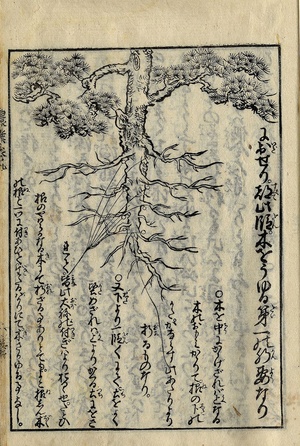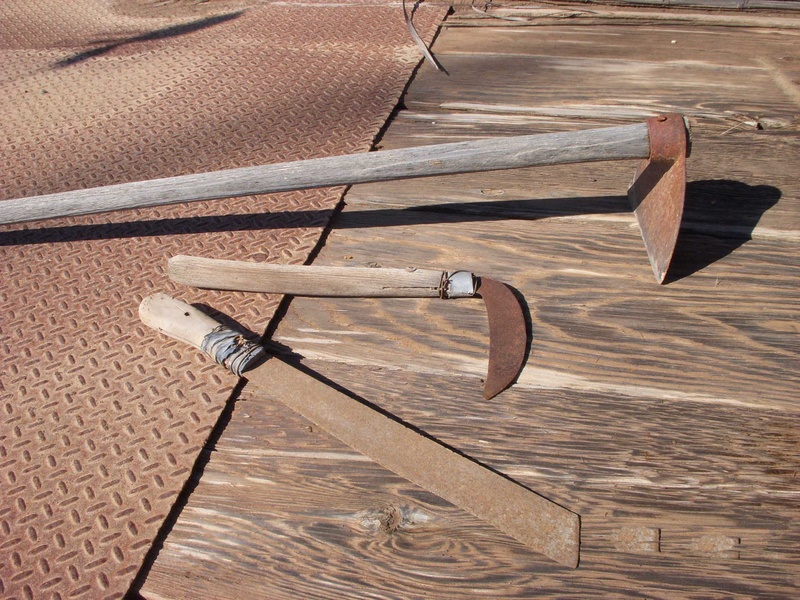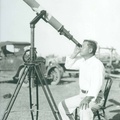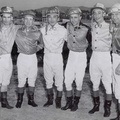During the early days of agricultural development in California’s Imperial Valley, most of the cotton farmers hailed from Texas and other southern states. They grew cotton as an annual crop. That is, the crop was planted and nurtured only until the cotton was picked. Then the bare stalks were plowed under and a new crop was planted the following season. In 1909 a prominent local pioneer named Ira Aten boasted that he discovered through experimentation that when the stalks were pruned back after the initial harvest and the same plants were allowed to sprout new growth the following season (as a perennial crop) he saw a dramatic increase in cotton yields. The Imperial Valley Press, however, gave credit where credit was due. On July 24, 1909, it reported that the practice was already well understood by the Japanese farmers in the area and that they were growing cotton in that fashion as that was how cotton had been cultivated in Japan.
The knowledge and experience in farming that Japanese immigrants brought with them from their homeland were factors that enabled them to contribute to the growth and improvement of the agricultural industry in California. Issei farmers became renowned for taking marginal, less desirable land, and converting it into fertile farmland. They maximized productivity by implementing intensive cultivation techniques. And as a consequence, land values increased wherever they settled.
In this article I wish to present a brief overview of the Issei generation’s agricultural heritage in Japan. There are features of Japan’s agrarian society of the Edo period (1600–1868) that provide insights into how the Issei gained a reputation for being exemplary farmers.
The majority of the Japanese immigrants who sailed to the United States at the end of the nineteenth century and beginning of the twentieth century came from an agricultural background. Although their peasant forebears endured a low standard of living, in Japan farming was culturally held in high esteem.
By the mid-1600s the ruling Tokugawa regime officially codified Japanese society into a hierarchy of four main hereditary classes called shi-nō-kō-shō. From highest to lowest rank, the classes were samurai or warriors (shi), peasants (nō), artisans (kō), and merchants (shō).
The peasantry was thus placed second from the top. Working the soil and the cultivation of crops were idealistically extolled as a virtuous closeness with nature. But there was a more pragmatic reason for the peasants’ relatively high status. Being an agrarian society, the farming class made up over 80 percent of the population, and agriculture formed the country’s economic base.1 The level of the feudal lords’ coffers depended on the productivity of the peasantry. What is more, the salaries of the samurai were actually paid in rice. Rice, Japan’s staple crop, served as a form of currency.
The peasants of feudal Japan paid taxes in kind, which meant that they were required to hand over to the domanial government a percentage of their harvest. The rate varied from domain to domain, but in some areas the tax was as high as 70 percent.2 Peasants who had to pay 70 percent of their crop yields as taxes were expected to subsist on the remaining 30 percent. Consequently, there was a strong motivation to maximize production.
The Issei farmers who reclaimed swamp lands of the Sacramento and San Joaquin delta regions, and converted desert into farmland in the Imperial Valley, followed the example of their forebears in feudal Japan. The peasants were experts at draining bogs and terracing hillsides. They were required to petition their lords for permission to reclaim land, which was invariably granted. The incentive for the peasants was that the new farmland was typically exempt from taxation for two years.
Issei farmers also inherited their ancestors’ skill in managing water. With water being Japan’s only abundant natural resource, irrigated farming had been practiced since as early as AD 300. It was during the Edo period, however, that massive irrigation engineering projects were initiated. The building of large-scale aqueducts and distributary canals made possible the transformation of dryland fields, which were dependent on rain water, into more productive irrigated paddies. A man-made aqueduct called the Minumadai Yōsui, for example, was constructed on the orders of the eighth Tokugawa shogun, Yoshimune. Completed in 1728, it extended fifty-two miles and delivered water to approximately 37,000 acres of farmland in what it now Saitama Prefecture.3
Because less than 16 percent of Japan’s land area is suitable for farming, reclamation and irrigation projects could only go so far. The average farm household’s landholding was 1 chō (2.45 acres).4 In contrast to the agricultural development in the American West where the conventional means of increasing agricultural output was through a continual expansion of acreage, Japan’s peasants turned to making advancements in agricultural science and technology in order to increase the output of their limited acreage.

A proliferation of books and manuals on farming practices was seen during the seventeenth and eighteenth centuries. The most remarkable of these treatises was undoubtedly Miyazaki Yasusada’s Nōgyō zensho (Agricultural Encyclopedia), which was published in 1697. It was a ten-volume work with chapters on 19 grain crops, 57 vegetables, 11 grasses, 36 trees, and 22 herbs. For each crop, instructions were given on planting, tillage, preferred soils, fertilizers, irrigation, and insect control. The characteristics of each stage of the plants’ growth were also described.5
The use of oils as insecticides and the selection of seeds, by soaking them and separating the heavier ones for planting, became common practices during the Edo period.6 Other innovations included the development of plant varieties and the extensive use of fertilizers.
Because they recognized that different plant strains possessed differing superior qualities, and with a rudimentary knowledge of plant breeding, Japan’s peasants developed new varieties, or cultivars. The number of rice varieties alone increased from 175 during the early 1600s to over 2,000 by the mid-1800s.7
In Japan, fertilizer was regarded as the most important input to increasing crop yields. In addition to fertilizers that the peasants had at hand, such as livestock manure, grass cut from nearby meadows, and kelp collected on the seashore; commercial fertilizers, night soil from the towns and cities and fish meal, were purchased from peddlers.8 The importance placed on fertilizer is evidenced by the fact that it was the single largest expenditure, making up over half of the typical farm budget by the end of the 1700s.9
Edo period manuals dictated which types of fertilizers to use at different stages of plant growth and prescribed the dilution rates for those fertilizers mixed with water. The manuals even provided instruction on how close to the plants the fertilizers should be applied and which fertilizers were most effective in different soil types.
Issei farmers were the product of their agricultural heritage in Japan. While they had to be innovative and adapt to their new environment in the United States, they nonetheless drew upon centuries-old practices. Parallels were noted by the esteemed scholar of American agricultural immigrant labor, Theodore Saloutos. He asserted that Issei farmers in California excelled because of their past experience of having “perfected techniques for extracting the greatest possible sustenance from the smallest piece of land in Japan where farming was held in greater esteem than in the United States…”10
Notes:
1. Mikiso Hane, Peasants, Rebels, & Outcastes: The Underside of Modern Japan (New York: Pantheon Books, 1982) 6.
2. Ibid.
3. Kodansha Encyclopedia of Japan, s.v. “Minumadai Canal.”
4. Hane, 6.
5. Thomas C. Smith, The Agrarian Origins of Modern Japan (Stanford: Stanford University Press, 1959) 88-89.
6. Smith, 98.
7. Hane, 56.
8. Ibid, 92.
9. Ibid, 82.
10. Theodore Saloutos, “The Immigrant in Pacific Coast Agriculture, 1880-1940,” Agricultural History 49 (1975), 190.
© 2017 Tim Asamen






